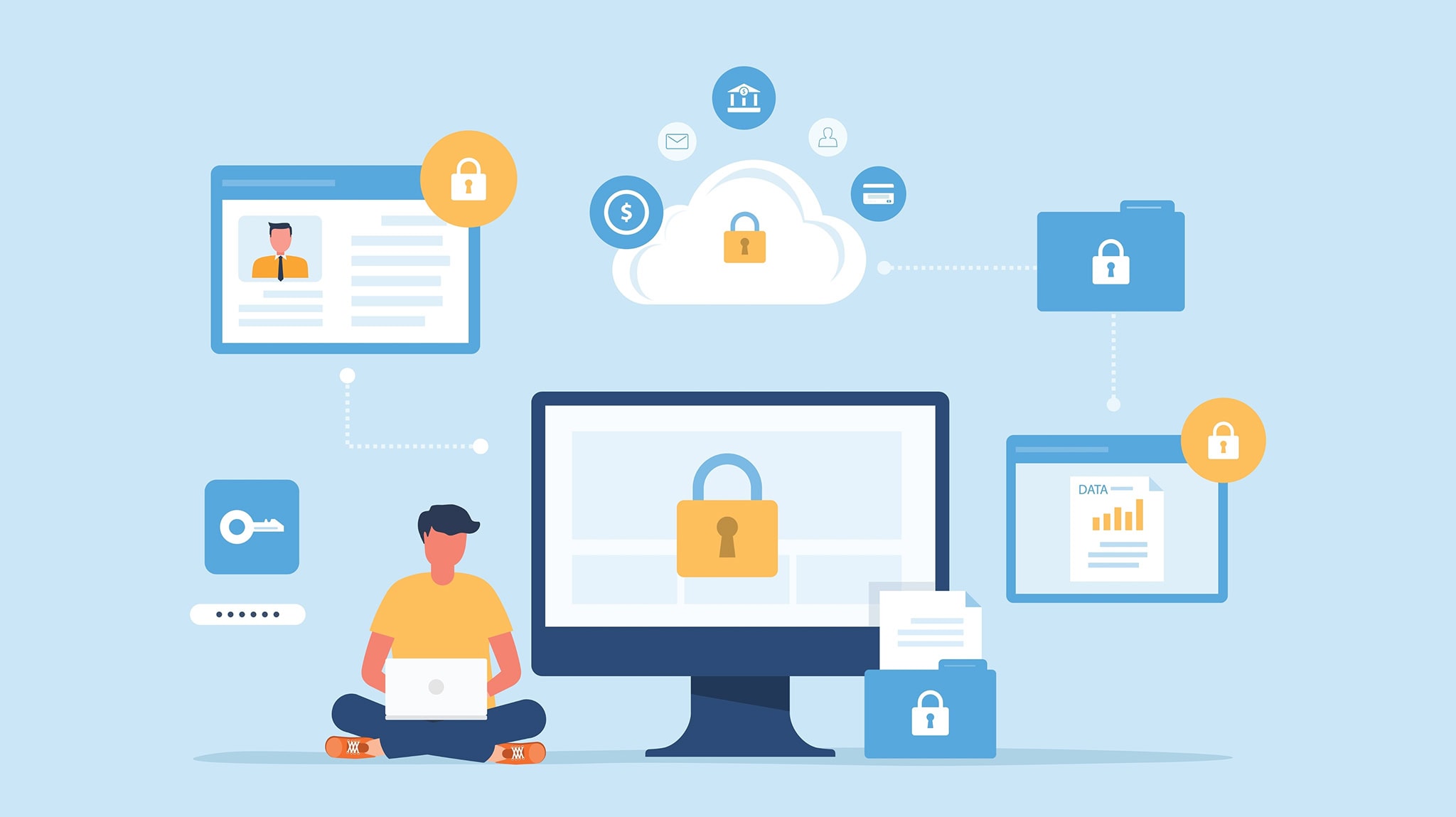WordPress powers 43% of all websites globally in 2025. In fact, you’ll find WordPress behind some of the digital presences of companies like Disney, Time Magazine, and BBC America, government institutions like the White House and U.S. Department of State, and some of the largest associations and non-profit organizations in the world.
But how secure is it?
Many organizations think they need to avoid WordPress because of lingering security concerns. Maybe a coworker heard that WordPress sites “get hacked all the time.” Or your IT consultant warns about “inherent security flaws.”
These outdated security myths aren’t just technical misconceptions; they’re barriers to mission advancement. When organizations make technology decisions based on decade-old fears rather than current realities, they often end up with unnecessarily expensive solutions that limit their digital effectiveness.
So let’s separate WordPress security fact from fiction once and for all, so your organization can make informed decisions that truly support your mission.

Myth #1: “WordPress is inherently insecure”
Reality: WordPress core hasn’t had a major security vulnerability since 2017. That pre-dates Prince Harry and Meghan Markle’s engagement and Taylor Swift’s Reputation album. In other words, quite a while ago.
The platform now includes:
- Automatic minor security updates by default (major security updates are available for auto-patching, too)
- Built-in Site Health diagnostics
- Regular security audits by core developers
- Better password management and login security
When security issues are discovered, they’re typically patched within hours thanks to the rapid release cycle (major updates every ~4 months, minor security updates every ~2 weeks). Closed-source platforms with annual release cycles can’t match that response time.
Myth #2: “WordPress plugins create inevitable security vulnerabilities”
Reality: While plugins can introduce risks if chosen carelessly, they’re also one of WordPress’s greatest security strengths when properly managed.
The key is thoughtful plugin selection:
- Choosing options from reputable developers
- Verifying regular update schedules
- Removing unused plugins
With over 10 million developers, the WordPress ecosystem all but guarantees security plugins receive constant improvement and scrutiny. That’s like having a Geek Squad the size of New York City’s population working on your platform.
Myth #3: “Closed-source CMSs like SiteFinity and Kentico are inherently more secure than open-source WordPress”
Reality: While closed-source platforms take security seriously, they face a practical challenge: their smaller user base and more limited developer community means fewer eyes looking for potential issues.
WordPress benefits from:
- Thousands of security researchers examining its code daily
- Faster identification of potential issues
- More rapid resolution of vulnerabilities
All major platforms offer similar security features, but WordPress’s transparent development and rapid update cycle provide advantages in addressing emerging threats.
Why These Myths Persist
WordPress’s security reputation was shaped during its early years (2005-2010) when the platform was still growing up. Back then, WordPress prioritized simplicity over enterprise security, and many users treated it as a “set it and forget it” solution without proper maintenance. This made sense, because, at the time, most people were using WordPress for blogs or smaller websites. However, as bigger organizations began making use of WordPress on more complex projects, WordPress had to rise to the occasion.
What followed was a complete transformation of WordPress’s security architecture. But perceptions formed during those early years have proven remarkably persistent. Like the kid in high school who earned an unfortunate nickname and still can’t shake it at the ten year reunion.
Organizations today make 2025 technology decisions based on 2015 security realities. That disconnect often leads to poor resource allocation and missed opportunities for mission advancement.

Modern WordPress Security Advantages
Today’s WordPress is nothing like the platform that earned its security reputation years ago. In current vernacular, we’d call it a Glow Up.
Key security improvements include:
- Available automatic updates: Security patches can be set to deploy automatically, though many professional hosts (including us) often manage this process strategically to avoid disruptions in site functionality.
- Site Health monitoring: Proactive identification of security issues before they become critical. Call it a FitBit for your website.
- Enhanced authentication: Two-factor authentication integration and improved password requirements
- Secure API protocols: Better protection for data in transit and third-party connections
Professional managed hosting with WordPress is the true game changer, though. When implemented thoughtfully, WordPress enjoys the same robust security features as any enterprise platform:
- DDoS protection
- Two-factor authentication
- Data encryption
- Granular access control
- Enterprise-grade firewalls
- 24/7 malware scanning
- and a lot more…
The key difference is that WordPress delivers this enterprise-grade security at a fraction of the cost.
“When it comes to security, if you’re updating it and maintaining it the way that you’re supposed to, WordPress is easily as secure as any other major CMS – probably even more secure.”
– Izzi Hassan, Support and QA Lead at Yoko Co

Practical Implications for Organizations
The disconnect between WordPress security perceptions and reality has profound implications for how organizations allocate resources. In some cases it’s almost a $200,000 cost difference over five years of ownership. This dramatic difference stems from three key factors highlighted:
- Zero license fees
- Significantly lower hosting costs
- More affordable feature additions
Beyond direct cost savings, WordPress offers crucial benefits for mission advancement:
Finding qualified talent is easier and more affordable.
WordPress’s extensive ecosystem allows organizations to implement new features quickly as needs evolve. This translates to faster implementation of mission-critical digital features without the extensive delays and higher costs of closed-source alternatives.
Security and performance improvements happen faster.
While closed-source platforms typically release major updates annually, WordPress’s ~4 month major release cycle and ~2 week minor update schedule ensures your digital presence stays current with the latest security protections and browser compatibility improvements.
Flexibility matters.
Organizations choosing WordPress avoid the vendor lock-in that often occurs with closed-source platforms. That means your organization maintains control of its digital presence and can adapt as your needs change.

Essential Security Actions
For organizations ready to move beyond WordPress security myths, focus on choosing the right hosting partner rather than managing technical details yourself:
- Choose comprehensive managed WordPress hosting that includes security monitoring, automatic updates, and plugin management
- Verify included security services like malware scanning, backup procedures, and threat protection
- Ensure two-factor authentication and other security features are built into the hosting package
- Work with providers who handle technical maintenance, allowing your staff to focus on content and mission advancement
- Ask the right questions: What security monitoring is included? How are updates and backups handled? What support is available for security incidents?
The most secure approach for mission-driven organizations is partnering with hosting providers who take full responsibility for the technical security aspects, freeing you to focus on what matters most: serving your mission effectively.
Security Done Right
Organizations face enough real challenges these days. Technology decisions should be based on current realities rather than outdated concerns. And like everything in business, ultimately it comes down to cost and time.
The bottom line is modern WordPress, when properly implemented and maintained, provides security that meets industry standards at a fraction of the cost of closed-source alternatives.
Ready to advance your mission, not limit it? You deserve evidence-based choices that support doing good, better.
Latest Posts
5 SEO Fixes You Can Make Today (No Tech Expertise Required)
You know your organization does important work. We know your organization does important work.…
Keep Reading5 Ways to Boost Website Performance Without a Redesign
The world is chaotic and uncertain right now, and this makes committing to large-scale…
Keep ReadingStrategic Website Updates: When to Refresh and When to Rebuild
In our recent article on Strategic Website Evolution, we explored how many organizations treat…
Keep Reading


